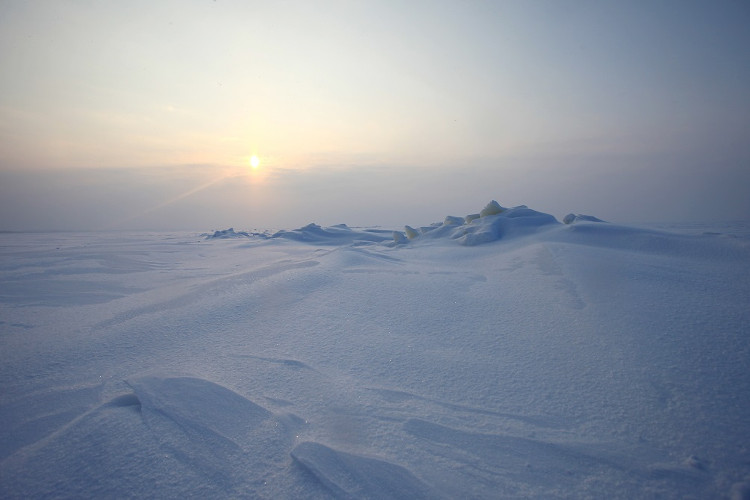Exotic creatures in Antarctica: Science must rethink the search for extraterrestrial life
Scientists have discovered an incredible thing in frost: Bacteria eat air to survive!
They discovered new bacteria that could survive in airborne matter. This discovery is very important because it innovates the way we think of strange creatures living on different planets in the universe.
Newly discovered organisms can live on basic EAT with hydrogen, carbon monoxide and carbon dioxide, allowing them to survive in the harshest conditions where energy sources and food become scarce or non-existent. at.
This finding raises a number of questions regarding search. Are there forms of low-level life in other planets and moons that can survive by eating thin air in the atmosphere?

Extreme environment in Antarctica.
This is a new possibility that the team of scientists at the University of New South Wales in Australia is studying.
Lead researcher Belinda Ferrari said: "Antarctica is one of the harshest habitats on Earth. However, the cold, dark and arid desert is where microbial populations are diverse and weathered. surprisingly rich ".
The question is how can bacteria survive when there is little water, very low organic carbon content and very little energy absorbed from the sun in the winter darkness.
In fact, there are places with maximum temperatures, freezing, little or no water. These places are also in the dark every month, or exposed to extreme ultraviolet radiation, in addition to a freezing and thawing cycle. All these events make life difficult to exist.
However, studies have shown that life finds a way to thrive in such harsh environments.
This has led scientists to ask the important question: How can different organisms survive without energy, like carbon turned into sugar through photosynthesis?
To answer this question, scientists took soil samples from two parts without ice in Antarctica. The researchers recreated the genome of 23 bacteria by studying the microbial DNA of the soil using sequencing.
Scientists have used small pieces of DNA to reproduce completely and can identify two previously unknown groups of bacteria they called WPS-2 and AD3.
WPS-2 and AD3 are not difficult to survive with little sunlight, no geothermal energy and little nutrients. This is the first form of unhealthy life that science discovered.
A new understanding of life can still exist in harsh and nutritionally harsh environments such as Antarctica opening up the possibility of air in the atmosphere supporting life on planets other than Earth.
- Detecting extraterrestrial creatures?
- China decided to find extraterrestrial life
- He tried to find extraterrestrial life
- Mysterious aliens: Exist or not exist? (Part 3)
- Can aliens live without water?
- Discover hundreds of strange creatures in the seabed of the Philippines
- Detecting concussions about 20 species of strange creatures in Antarctica
- Course to search for aliens
- Cosmic meteorite originated from ... Earth
- Campaign to search for extraterrestrial life (Part 2)
- Campaign to search for extraterrestrial life (Part 1)
- The 10 most exotic creatures have been discovered in 2018
 Why do potatoes have eyes?
Why do potatoes have eyes? 'Tragedy' the world's largest carnivorous life: Death becomes ... public toilet
'Tragedy' the world's largest carnivorous life: Death becomes ... public toilet Tomatoes were once considered 'poisonous' for 200 years
Tomatoes were once considered 'poisonous' for 200 years Detecting microscopic parasites on human face
Detecting microscopic parasites on human face